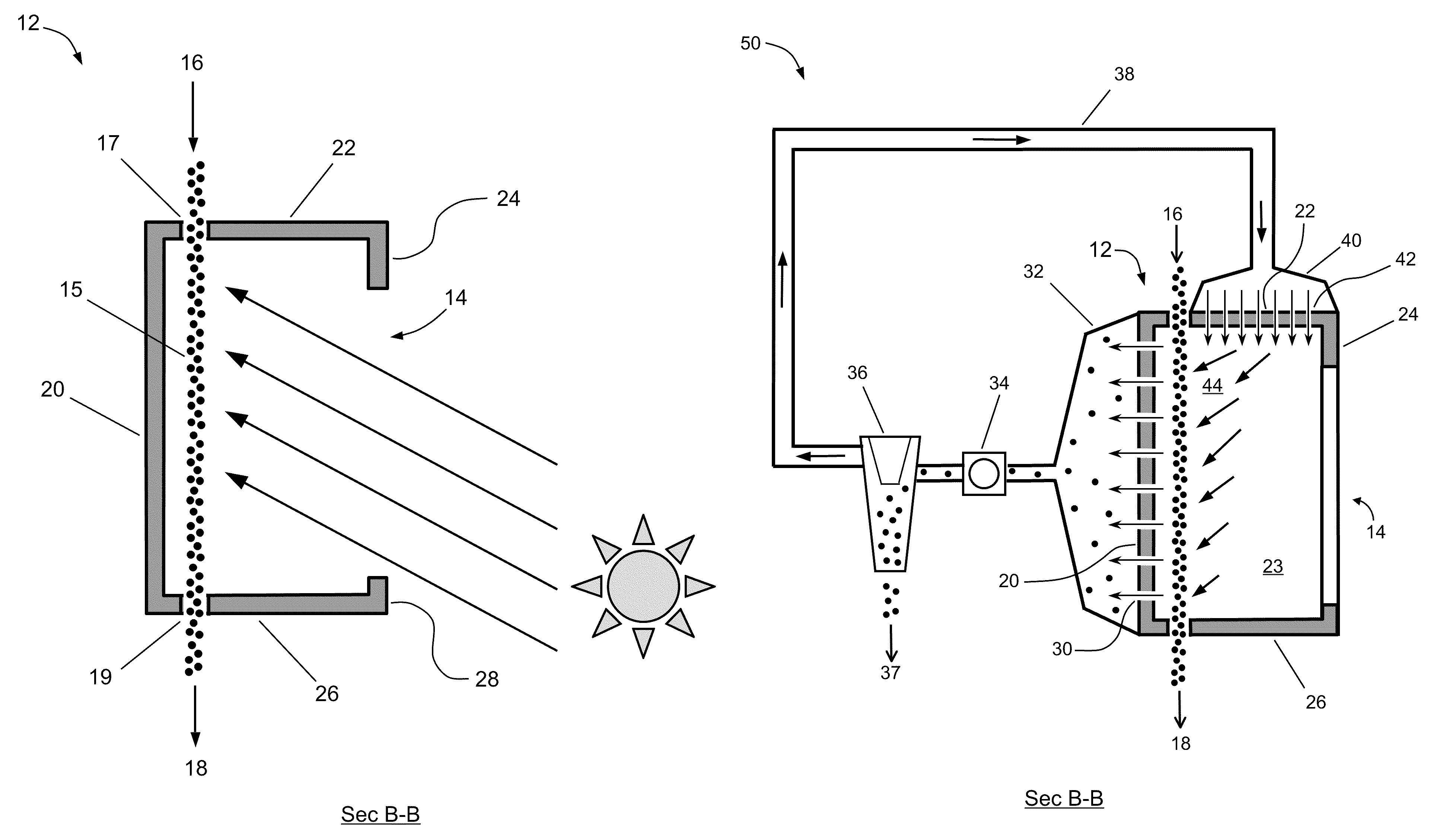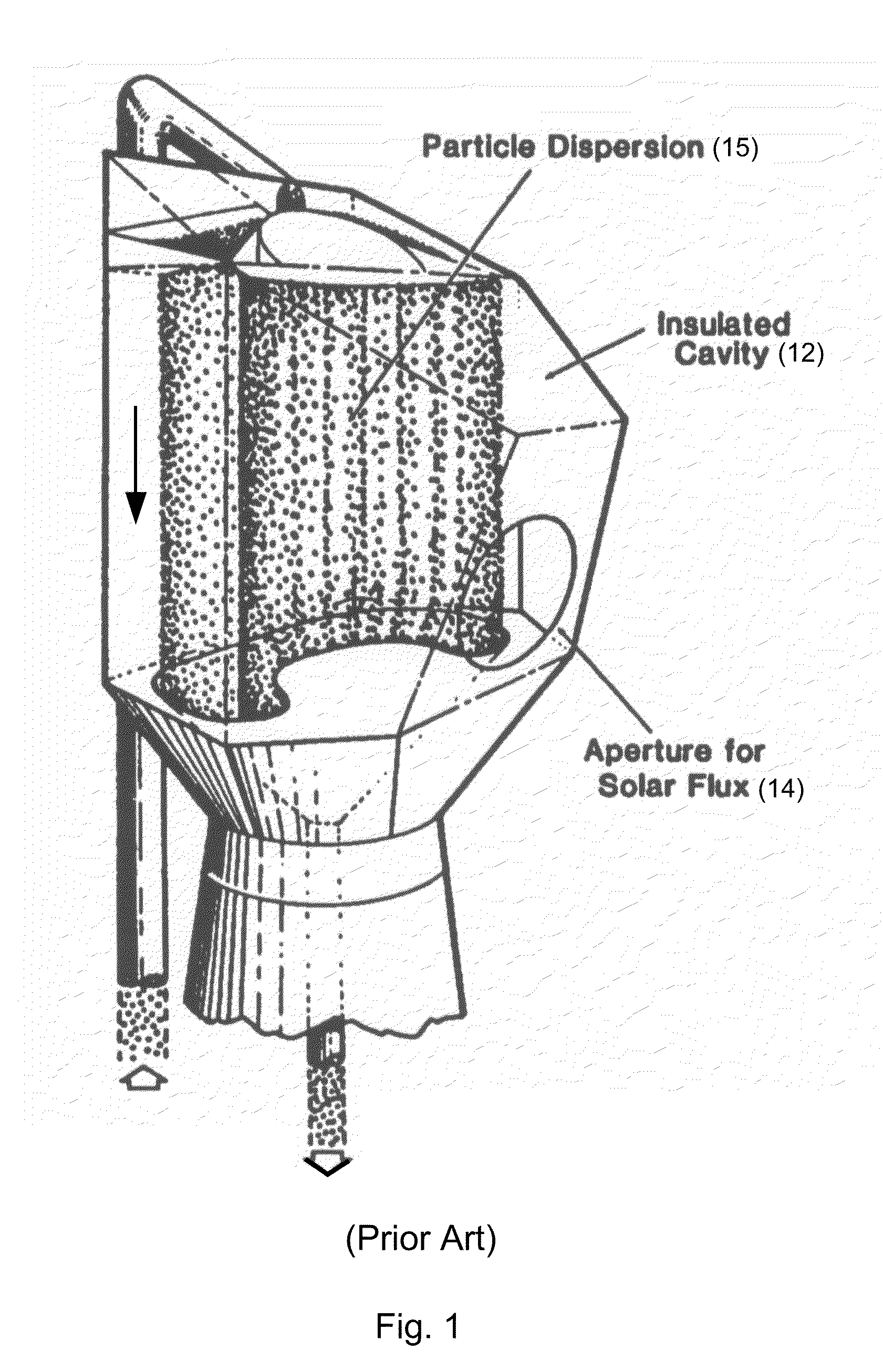Suction-recirculation device for stabilizing particle flows within a solar powered solid particle receiver
a solid particle receiver and suction recirculation technology, which is applied in solar heat systems, solar thermal energy generation, lighting and heating apparatus, etc., can solve the problems of destabilizing the particle curtain and ejecting particles, and achieve the effect of minimizing heat loss and high receiver efficiency
- Summary
- Abstract
- Description
- Claims
- Application Information
AI Technical Summary
Benefits of technology
Problems solved by technology
Method used
Image
Examples
Embodiment Construction
[0031]The words “cavity”, “receiver”, “receiver cavity” and “box” are used interchangeably.
[0032]The method and apparatus of the present invention is a suction-recirculation device that sucks air out of, and recirculates air back into, a solar-powered solid particle receiver cavity (box). This recirculation loop creates a modified internal airflow pattern (sweeping flow) within the receiver that stabilizes the particle curtain against disruption from oblique external wind flows. A fan (or fans) is installed within ductwork located behind the back wall of the cavity. The fan creates a negative pressure, and sucks the internal cavity air through many small holes that are evenly spaced along the back wall. This air is then recirculated and reintroduced back into the cavity through many small holes located in the cavity ceiling and the upper aperture front wall (i.e., top front lip of the cavity). Flow areas are matched so the mass flow rate of air flowing through the back wall is the s...
PUM
 Login to View More
Login to View More Abstract
Description
Claims
Application Information
 Login to View More
Login to View More - R&D
- Intellectual Property
- Life Sciences
- Materials
- Tech Scout
- Unparalleled Data Quality
- Higher Quality Content
- 60% Fewer Hallucinations
Browse by: Latest US Patents, China's latest patents, Technical Efficacy Thesaurus, Application Domain, Technology Topic, Popular Technical Reports.
© 2025 PatSnap. All rights reserved.Legal|Privacy policy|Modern Slavery Act Transparency Statement|Sitemap|About US| Contact US: help@patsnap.com



